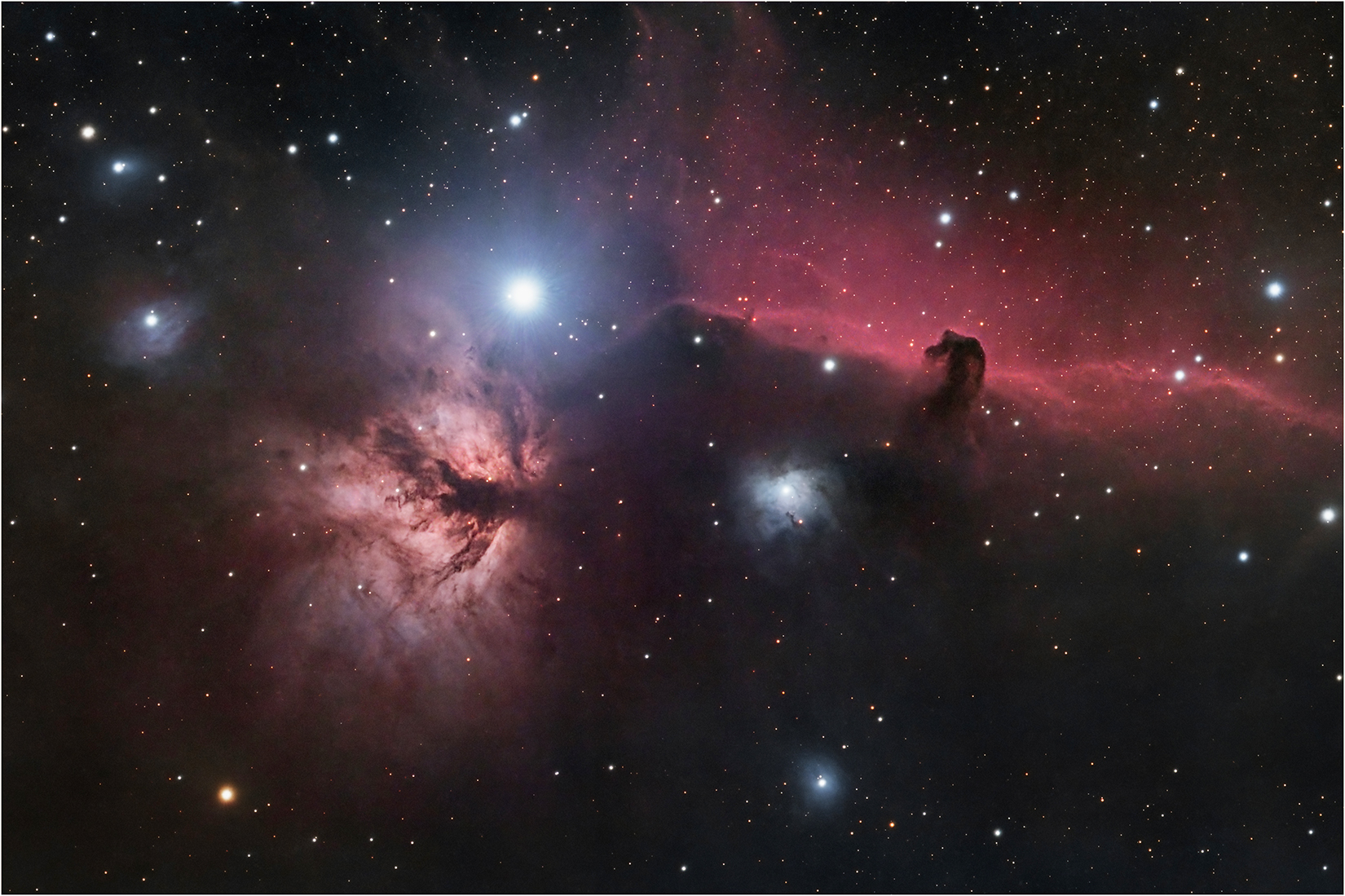The Horsehead Nebula (designated as Barnard 33) in Orion is one of the finest sights in Astro-Photography. This part of Orion is rich in nebula, with the bright Flame Nebula (NGC2024) to the left of the image, and the H-alpha rich region IC 434 behind the Horsehead. The Horsehead itself is a region of dark dust, which is only visible because it blocks the light from the H-alpha region behind – the same effect is visible in the centre of the Flame Nebula. The very bright star above the Flame Nebula is Alnitak, which is the left-most star in Orion’s belt.
This whole area is part of the much large Orion Molecular Cloud – a region of dust and gas that lies just over 1000 light years distant and spans the entire Orion constellation. This is the closest star-forming region to Earth, which is why it includes a number of bright prominent nebula.
The image above is an LRGB image, taken with a cooled mono astro-camera and using different filters for the Red, Green and Blue colours, and then a clear filter to gather light as quickly as possible. The separate images have then been combined in a program called PixInsight to create the final colour image.
Image Details
- Date: 9th January 2024.
- Telescope: Altair Astro 72EDF. Focal Length: 432mm, Aperture: F6.
- Camera: Altair Astro 183MM Cooled Mono Astro Camera at Gain 200, Offset 40, Temp -10degC.
- Filters: Luminance: Optolong L-Pro. RGB – Optolong RGB Filters.
- Mount: Skywatcher HEQ5.
- Guide Scope: Altair Astro 60mm.
- Guide Camera: QHY5LII.
- Guide Camera: QHY5LII.
- Exposure Details: L: 54 x 120s (1hr 48min), R: 20 x 120s (40min), GB: 19 x 120s each (38min).
- Total Integration Time: 3hr 44min.

